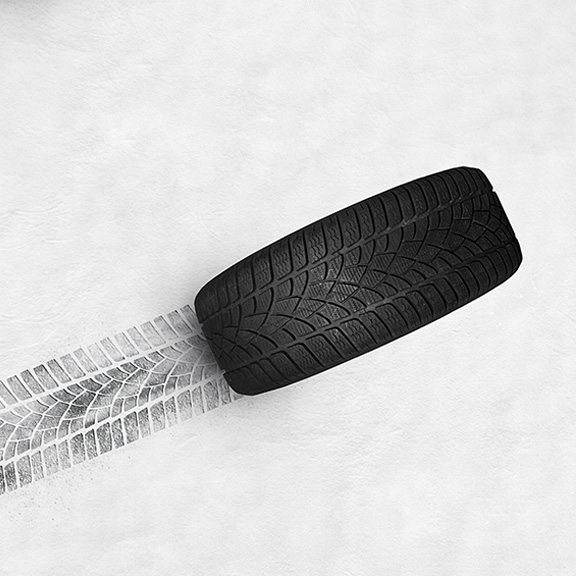
When your job requires that you drive year round regardless of conditions, walking in a winter wonderland might sound like a treat. Nearly a quarter of all weather-related vehicle crashes occur on snowy, slushy or icy pavement and 15 percent happen during snowfall or sleet. It can be a nerve-wracking experience.
It is very hard to avoid the snowy weather when more than 70 percent of the nation’s roads are located in snowy regions (those that receive more than five inches average snowfall annually). Nearly 70 percent of the U.S. population live in these snowy regions.
Driving in that snowy weather takes more time. On freeways, light rain or snow can reduce average speed by 3 to 13 percent. In heavy snow, average freeway speeds can decline by 5 to 40 percent. And we all know that time is money. The estimated cost of weather-related delay to trucking companies ranges from 2.2 billion dollars to 3.5 billion dollars annually.
What we also know is that pushing too hard in bad weather can cost a life. More 1,300 people are killed and more than 116,800 people are injured in vehicle crashes on snowy, slushy or icy pavement annually. No amount of money can make up for that loss.
Your best bet? Be prepared. Be patient. Review these tips and have a safe winter!
BE PREPARED BEFORE WINTER STORMS STRIKE
- Review weather reports for the latest storm watches, warnings and advisories.
- Get proper rest before and during every trip.
- Dress appropriately for the weather.
- Winterize your vehicle before the winter season.
- Perform a thorough pre-trip inspection, including the heater and defroster, before starting your trip and make all necessary repairs.
- Make sure your load is distributed evenly to maintain vehicle stability.
- Plan a primary and alternate travel route and advise dispatch.
- Inspect, repair and clean windows, windshield wipers, mirrors, lights, reflective tape and any hazmat placards.
- Road salt residue greatly reduces headlight brightness. Clean headlights, vehicle lights, windows and mirrors regularly.
- Keep the fuel tank as full as possible, using the proper fuel or additives to prevent gelling.
- Protect air brake air supply from freezing. Bleed air brakes often. Check automatic bleeders frequently to verify they have not frozen.
- Pack a snow scraper, sturdy shovel, extra fuel filter, winter windshield washer fluid and abrasive material (like sand).
- Clean all hand and foot holds of ice and snow.
DRIVE WISELY AND CAUTIOUSLY
- Stay alert. Slightly open a window to provide fresh air.
- Slow down and never drive faster than your vehicle has the ability to stop and maneuver in a controlled manner.
- Be aware that anti-lock brakes often take longer to stop when activated. A jackknife can occur if only the tractor or trailer has ABS.
- Turn off the cruise control so you are in control of your vehicle.
- Keep at least an eight-second following distance to allow more time to stop and maneuver.
- Never overestimate your vehicle’s ability to perform beyond its safety limitations or traction capability, or your driving ability. Also consider how your load affects safe handling.
- Drive defensively and look further down the road to anticipate emergencies.
- Avoid sudden turns, stops or accelerations.
- Be prepared for other motorists’ erratic and uncontrolled driving.
- Give snow plows and other road equipment plenty of room.
- Watch for ice and black ice, especially on bridges, overpasses and parking lots.
- Do not pass on or near a bridge or overpass.
- Use extra caution on hills and be prepared to stop. Traffic may be backed up on the other side and the road may be slick.
- Do not attempt to drive around or through a section of roadway where other vehicles have stalled or collided.
- Do not take any unnecessary chances. If conditions are too dangerous to drive, pull off the road at the first safe location.
- Stay constantly alert for changing weather and road conditions, especially from county to county.
PLAN FOR SURVIVAL
- Carry a winter storm survival kit.
- If you become stranded, stay with your vehicle, turn on your hazard lights, display a brightly colored cloth on the antenna, conserve fuel as much as possible, keep the exhaust pipe clear and leave the dome light on when your vehicle’s engine is running so you can be seen.
- Perform minor exercises to maintain warmth and blood circulation, but avoid overexertion.
- Use extra clothing, blankets, and floor mats for added insulation to stay warm.
- Keep one window, away from the blowing wind, slightly open to let in fresh air.
*Sources: U.S. Department of Transportation Federal Highway Administration; National Highway Traffic Highway Administration
Categorized in:
-
Transportation Safety
-
Driving Techniques
-
Seasonal Driving Tips
-
Injury Prevention
ClickToAddCategories
No categories have been created yet.
Community
Company Updates
Driver Recruitment
Investor News
Transportation Safety
Claims
Driver Management
Driving Techniques
Distracted Driving
Seasonal Driving Tips
Sharing the Road
Health & Wellness
Injury Prevention
Regulations
Security & Cargo Theft
Vehicle Inspections
Weather Conditions
Workplace Safety
Workers Compensation
Done